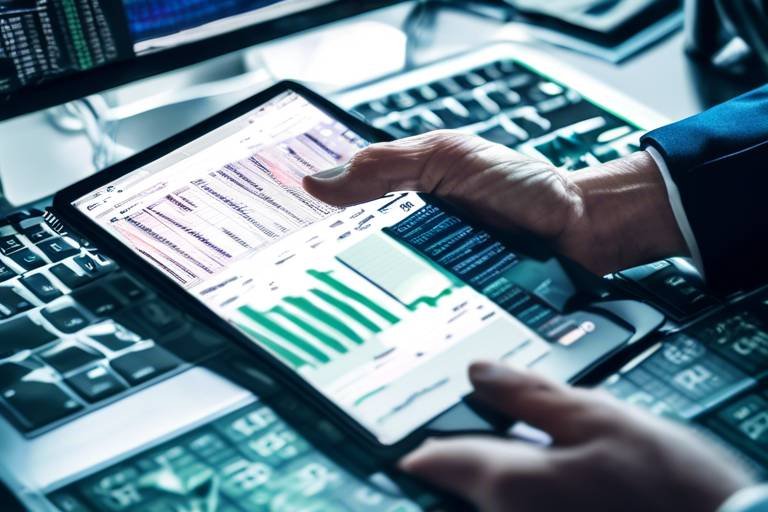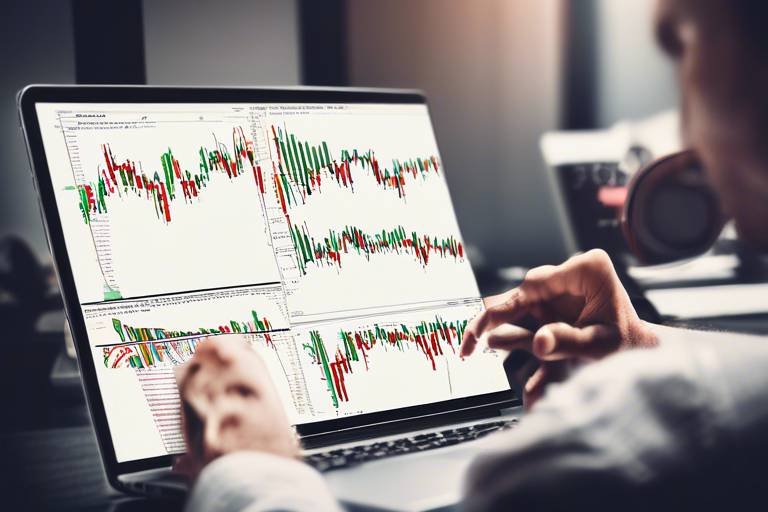How to Trade Cryptocurrency with Limited Capital
Trading cryptocurrency can seem daunting, especially if you're working with limited capital. But fear not! With the right strategies and mindset, you can navigate this exciting market without breaking the bank. Think of it like learning to ride a bike; at first, it may feel wobbly and uncertain, but with practice and persistence, you'll find your balance and even enjoy the ride!
First and foremost, it’s essential to understand that trading cryptocurrency isn’t just about buying low and selling high. It’s a complex dance that requires knowledge, patience, and a bit of intuition. The beauty of cryptocurrencies lies in their volatility, which can lead to significant gains—but it can also result in losses. So, how do you make the most of your limited funds without falling into the trap of emotional trading? Let’s dive into some effective strategies!
Before diving into trading, it's crucial to grasp the fundamentals of cryptocurrency, including how blockchain technology works and the significance of different coins in the market. Blockchain is the backbone of cryptocurrencies, acting as a decentralized ledger that records all transactions. Understanding this technology helps you appreciate the value and potential of various coins, from Bitcoin to Ethereum and beyond.
Selecting a reliable cryptocurrency exchange is vital for successful trading. Not all exchanges are created equal, and choosing the right one can save you time, money, and a whole lot of headaches. Key factors to consider include:
- Fees: Look for exchanges with low trading fees to maximize your profits.
- Security Features: Ensure the platform has robust security measures, such as two-factor authentication.
- User Experience: A user-friendly interface can make your trading journey smoother.
Establishing a trading budget helps manage risk and avoid emotional decision-making. Think of it as setting a spending limit before a shopping spree. You wouldn’t want to blow your entire paycheck on impulse buys, right? Similarly, allocate a specific amount for trading and stick to it. This discipline prevents you from chasing losses and keeps your trading strategy grounded.
Effective risk management is essential for protecting your capital. It’s like wearing a seatbelt in a car; it’s there to keep you safe in case of an unexpected event. Here are a few strategies to consider:
- Stop-Loss Orders: These are automatic sell orders placed at a specific price to limit losses.
- Diversification: Spread your investments across different cryptocurrencies to mitigate risk.
Understanding technical analysis can significantly enhance your trading decisions. It’s like learning to read a map before embarking on a journey. Familiarize yourself with basic concepts and tools, such as:
| Tool | Description |
|---|---|
| Charts | Visual representations of price movements over time. |
| Indicators | Mathematical calculations based on price, volume, or open interest. |
These tools can help you analyze market trends and make informed decisions.
Deciding between long-term investing and short-term trading strategies can impact your approach. Long-term investing is like planting a tree; it takes time to grow, but the rewards can be substantial. On the other hand, short-term trading is akin to sprinting; it requires quick decisions and can lead to quick gains or losses. Weigh the pros and cons of each method to determine which aligns best with your financial goals.
Utilizing trading tools can optimize your trading experience. There are various platforms and applications available that assist in tracking performance, managing trades, and analyzing market data. These tools can be your best friends in the trading world, helping you stay organized and informed.
The cryptocurrency market is constantly evolving. New coins, technologies, and regulations emerge regularly. To stay ahead of the game, it’s crucial to keep learning and adapting your strategies. Consider following industry news, joining online forums, or taking courses to enhance your knowledge. Remember, the more you know, the better equipped you’ll be to make informed decisions.
- What is the minimum amount required to start trading? It varies by exchange, but many allow you to start with as little as $10.
- Is trading cryptocurrency safe? While there are risks, using secure exchanges and employing good risk management can minimize them.
- Can I trade cryptocurrency without prior experience? Yes, but it’s advisable to educate yourself and start with small amounts.
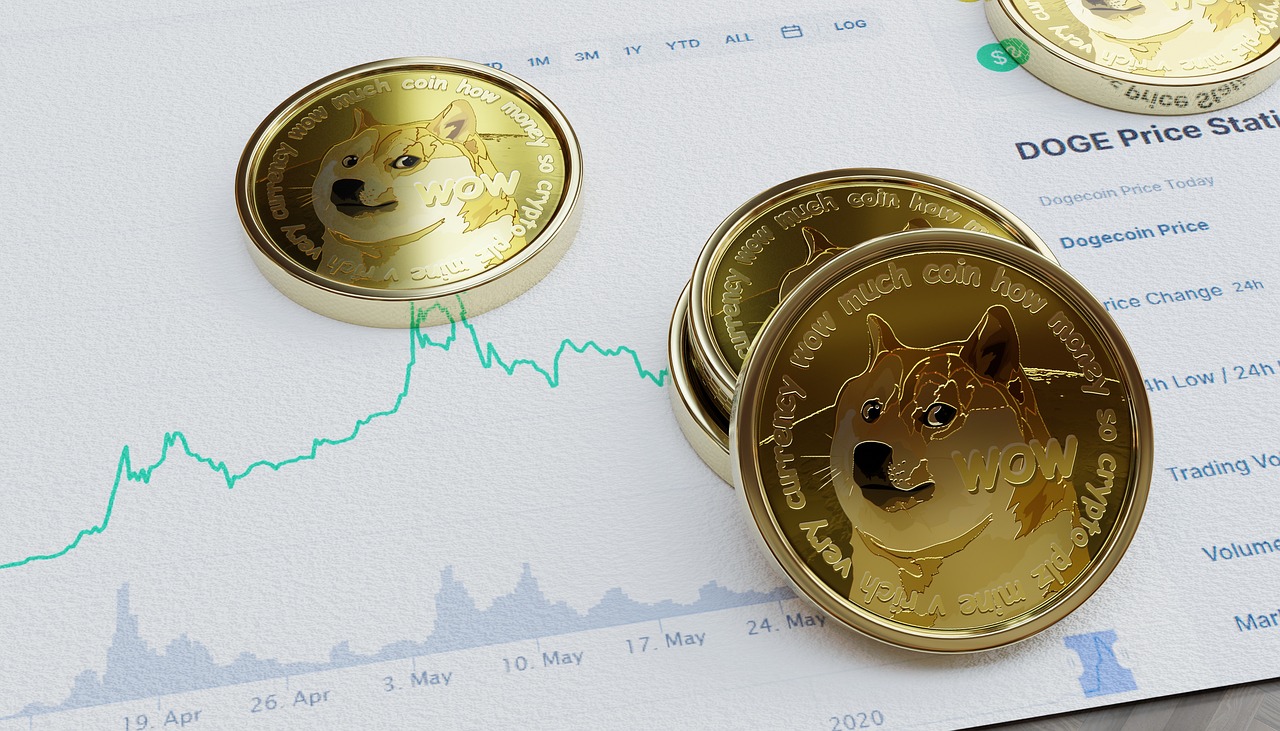
Understanding Cryptocurrency Basics
Before diving into the exciting world of cryptocurrency trading, it's essential to grasp the fundamentals of what cryptocurrencies are and how they function. At its core, cryptocurrency is a form of digital or virtual currency that uses cryptography for security. This makes it incredibly difficult to counterfeit or double-spend. The most well-known cryptocurrency, Bitcoin, was created in 2009, and since then, thousands of alternatives have emerged, each with unique features and purposes.
One of the foundational technologies behind cryptocurrencies is blockchain. Think of blockchain as a digital ledger that records all transactions across a network of computers. This decentralized nature means that no single entity has control over the entire network, which enhances security and transparency. Each block in the blockchain contains a list of transactions, and once a block is filled, it is added to the chain in a way that is permanent and unalterable. This is crucial for building trust among users, as it ensures that all transactions are publicly verifiable.
When exploring the cryptocurrency landscape, it's also important to understand the different types of coins available. Here are a few categories:
- Coins: These are digital currencies that operate independently on their own blockchain, like Bitcoin and Ethereum.
- Tokens: These are built on existing blockchains and often represent assets or utilities, like those used in Initial Coin Offerings (ICOs).
- Stablecoins: These are designed to minimize price volatility by pegging their value to a stable asset, such as the US dollar.
As you begin your trading journey, familiarizing yourself with these concepts will provide a solid foundation for making informed decisions. Additionally, understanding the market dynamics, such as supply and demand, can help you predict price movements. For instance, when a new technology or partnership is announced, it can create a surge in interest and drive prices up, while negative news can have the opposite effect.
In summary, grasping the basics of cryptocurrency and blockchain technology is crucial for anyone looking to trade. With a solid understanding of these concepts, you can navigate the complex world of digital currencies with greater confidence and make more informed trading decisions.
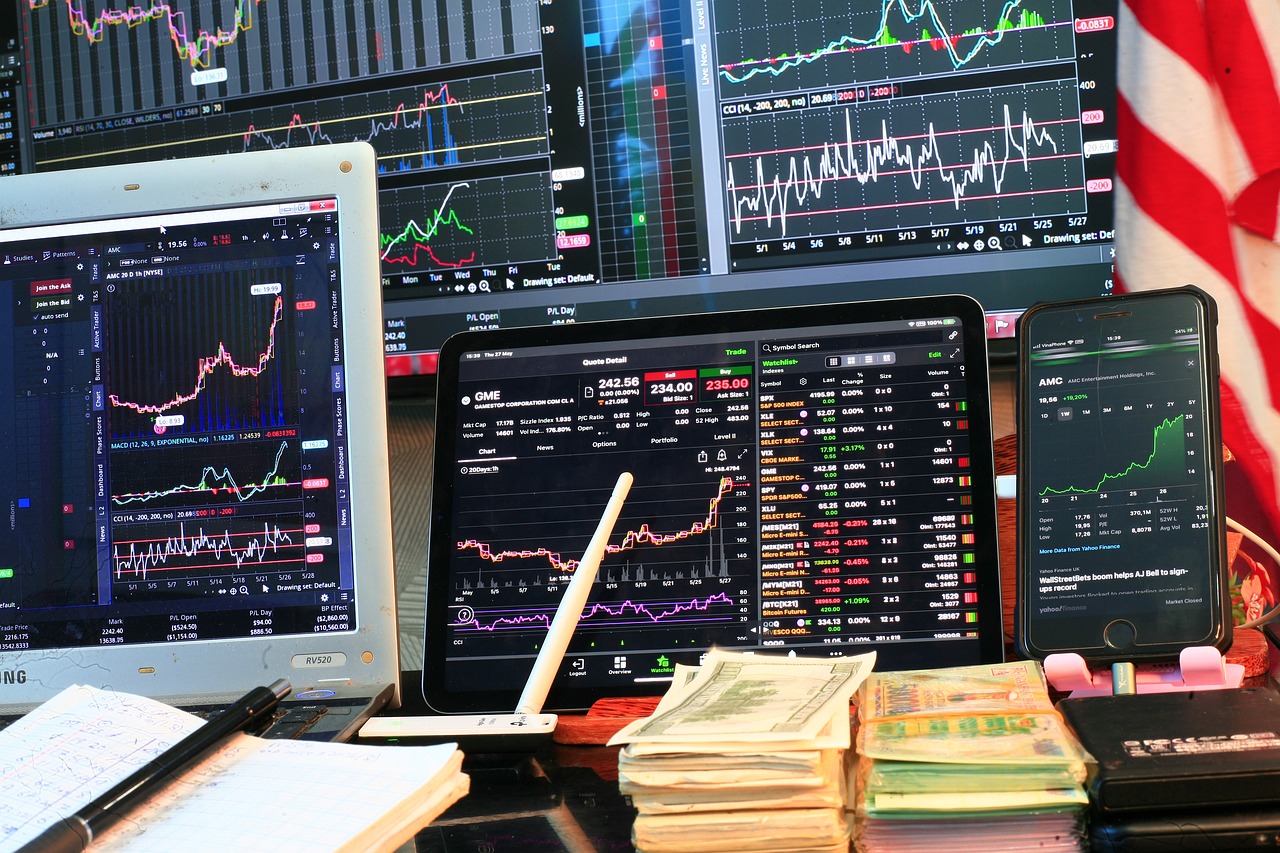
Choosing the Right Exchange
When it comes to trading cryptocurrency, selecting the right exchange can feel like choosing a ship to sail the vast ocean of digital assets. With countless options available, it’s essential to navigate this decision wisely. A reliable exchange serves as your gateway to the crypto world, impacting everything from the fees you pay to the security of your funds. So, what should you look for?
First and foremost, fees are a crucial factor. Different exchanges have varying fee structures, which can significantly affect your profits, especially when trading with limited capital. Some platforms charge a flat fee per transaction, while others might take a percentage of your trade. Always read the fine print and calculate how these fees will eat into your potential returns.
Next up is security. You wouldn’t want to store your hard-earned money in a bank with a shaky reputation, right? The same principle applies to cryptocurrency exchanges. Look for platforms that offer robust security measures, such as two-factor authentication (2FA), cold storage for funds, and a solid track record of protecting user assets. A good exchange should also have transparent policies regarding hacks and insurance for user funds.
Another vital aspect to consider is the user experience. An intuitive interface can make a world of difference, especially for beginners. Imagine trying to navigate a complicated website while the market is fluctuating wildly; it’s enough to drive anyone mad! Look for exchanges that offer a clean, user-friendly design and provide educational resources to help you get started. Additionally, check if they have a mobile app, as trading on-the-go can be a real game-changer.
Furthermore, consider the variety of cryptocurrencies available on the exchange. Not all platforms support the same coins. If you have specific cryptocurrencies in mind that you want to trade, ensure that the exchange lists those options. This is especially important for traders looking to diversify their portfolios or invest in emerging altcoins.
Lastly, don’t overlook the customer support services. In the fast-paced world of cryptocurrency, issues can arise unexpectedly. Whether it’s a question about a transaction or a technical glitch, having access to responsive and knowledgeable customer support can save you a lot of headaches. Look for exchanges that offer multiple support channels, such as live chat, email, and phone support.
In summary, choosing the right exchange is like picking the perfect partner for your trading journey. Take your time to research and evaluate your options based on fees, security, user experience, available cryptocurrencies, and customer support. By doing so, you’ll set yourself up for a smoother trading experience and maximize your potential for success.
- What are the most popular cryptocurrency exchanges? Some of the most well-known exchanges include Binance, Coinbase, Kraken, and Bitstamp.
- How do I know if an exchange is secure? Look for exchanges that offer two-factor authentication, cold storage, and a history of security measures.
- Can I trade cryptocurrencies without an exchange? Yes, you can trade through peer-to-peer platforms or decentralized exchanges, but these options may come with their own risks and challenges.
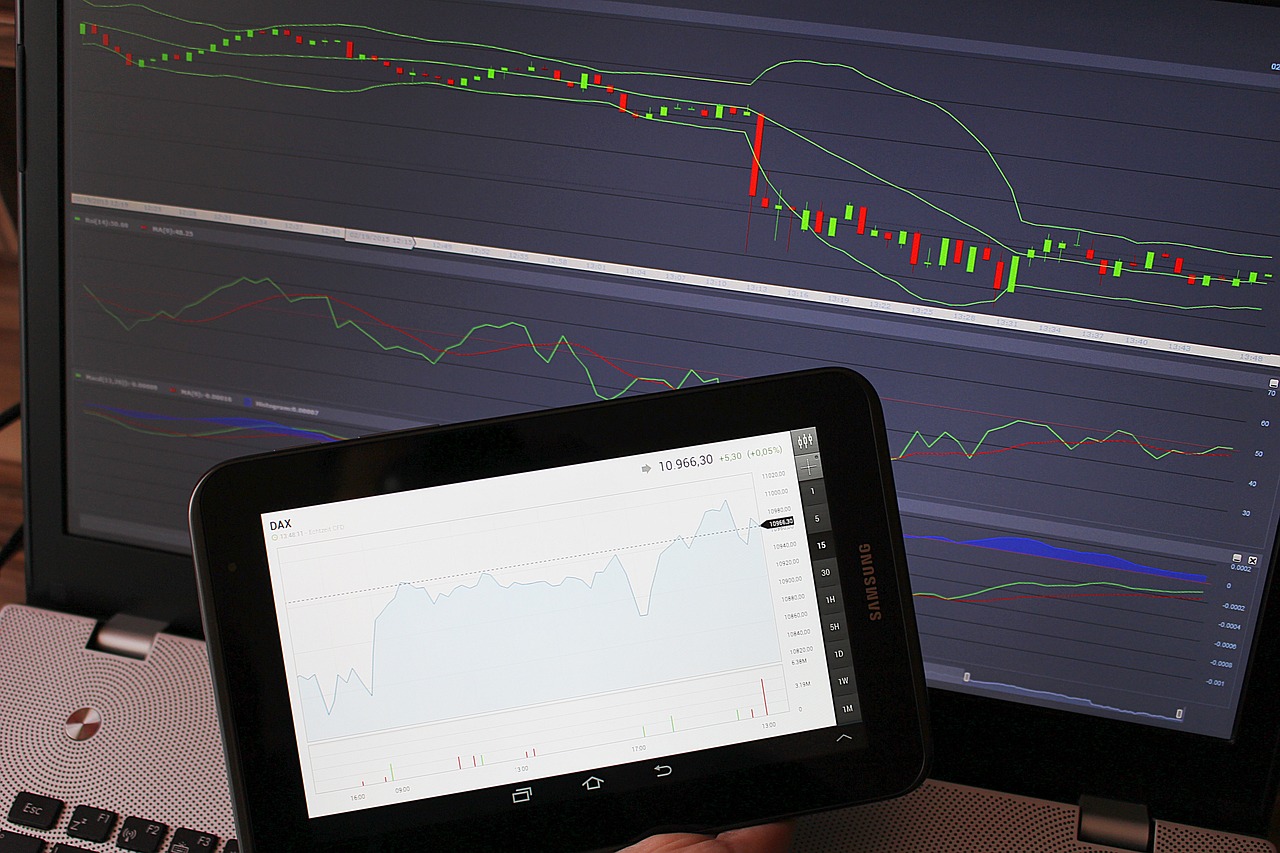
Setting a Trading Budget
When it comes to trading cryptocurrency, setting a trading budget is not just a good idea; it's an essential step that can make or break your trading journey. Imagine stepping into a casino without a budget—sounds risky, right? The same principle applies to cryptocurrency trading. A well-defined budget helps you manage your risk and keeps your emotions in check. So, how do you go about setting one?
First and foremost, you need to assess your financial situation. Take a good look at your income, expenses, and savings. It's crucial to only invest what you can afford to lose. Think of it as planting seeds in a garden; you wouldn’t want to invest your entire life savings into one plant, would you? Instead, allocate a specific amount of your disposable income for trading. This will help you maintain a healthy balance and avoid financial stress.
Next, consider how much of your budget you want to allocate to each trade. A common rule of thumb is to risk no more than 1-2% of your total trading budget on any single trade. This way, even if a trade goes south, you’re not wiping out your entire investment in one go. For example, if your trading budget is $1,000, you would only risk $10 to $20 per trade. This strategy is akin to spreading your bets across multiple horses in a race instead of putting it all on one. It increases your chances of coming out ahead.
Additionally, it’s wise to set aside funds for fees and taxes. Many traders overlook these costs, which can eat into your profits. When choosing a trading platform, be aware of transaction fees, withdrawal fees, and any other potential charges. These fees can add up quickly, so it's important to factor them into your budget. You might even want to create a small table to keep track of these expenses:
| Type of Fee | Estimated Cost |
|---|---|
| Transaction Fee | $0.10 - $2.00 |
| Withdrawal Fee | $0.50 - $5.00 |
| Tax on Profits | Varies by jurisdiction |
Lastly, stick to your budget! This is easier said than done, especially when emotions run high during trading. One helpful tip is to use trading journals where you can document your trades, including the reasons behind each one. This practice not only helps you stay accountable but also allows you to review your performance over time. Remember, every trader has their ups and downs, so don’t let a few losses derail your entire strategy. Keeping a level head is key!
In conclusion, setting a trading budget is a crucial step in your cryptocurrency journey. By assessing your financial situation, allocating funds wisely, and keeping track of fees, you can navigate the volatile waters of trading with greater confidence. After all, a well-thought-out budget is like a life jacket in a stormy sea—essential for keeping you afloat!
- How much should I start with? It's advisable to start with an amount you can afford to lose, ideally between $100 to $500 for beginners.
- What if I lose all my budget? If you find yourself losing your budget, take a step back, reassess your strategy, and consider taking a break from trading.
- How can I track my trading budget? Use spreadsheets or trading journals to keep a detailed record of your trades, budgets, and expenses.

Risk Management Strategies
When it comes to trading cryptocurrencies, especially with limited capital, effective risk management is your best friend. Think of it as your safety net that protects you from the unpredictable swings of the market. Without a solid strategy in place, even the most promising trades can turn into costly mistakes. So, how do you safeguard your investments? Let's dive into some essential risk management strategies that can help you navigate the crypto landscape.
First and foremost, one of the most effective tools at your disposal is the stop-loss order. This nifty feature allows you to set a predetermined price at which your asset will automatically be sold, thereby limiting your losses. For instance, if you buy a cryptocurrency at $100 and set a stop-loss at $90, your asset will be sold if the price drops to that level. This way, you can prevent a minor setback from spiraling into a major financial disaster. It's like having a parachute when you're skydiving—essential for a safe landing!
Another crucial aspect of risk management is diversification. Instead of putting all your eggs in one basket, spread your investments across different cryptocurrencies. This strategy reduces the impact of poor performance from a single asset on your overall portfolio. For example, if you invest in Bitcoin, Ethereum, and a few altcoins, a downturn in one might be offset by gains in another. Think of it as a well-balanced meal—each ingredient contributes to your overall health, and if one ingredient is lacking, the others can help fill the void.
Moreover, it's essential to determine your risk tolerance before you start trading. Are you someone who can handle volatile shifts in the market, or do you prefer a more stable approach? Understanding your risk tolerance helps you make informed decisions and stick to your trading plan. You can categorize your risk tolerance into three main levels:
- Conservative: Prefers low-risk investments and is willing to accept lower returns.
- Moderate: Open to some risk for potentially higher returns.
- Aggressive: Willing to take high risks for the chance of substantial gains.
In addition to these strategies, keeping a trading journal can be a game-changer. Documenting your trades, the reasoning behind them, and the outcomes allows you to learn from both successes and failures. Over time, this record becomes a valuable resource for refining your trading strategy. It’s like having a coach who helps you analyze your performance and improve your game.
Lastly, always remember to stay informed. The cryptocurrency market is incredibly dynamic, with trends and news that can impact prices in an instant. Following reliable news sources, joining online communities, and engaging with fellow traders can provide insights that enhance your risk management strategies. After all, knowledge is power, and in the world of trading, it can be the difference between a winning and losing trade.
Q: What is a stop-loss order?
A: A stop-loss order is an instruction to sell a cryptocurrency when it reaches a certain price, helping to limit potential losses.
Q: How can I diversify my crypto portfolio?
A: You can diversify by investing in multiple cryptocurrencies instead of focusing on just one, which spreads out your risk.
Q: What should I include in my trading journal?
A: Your trading journal should include details about each trade, such as the date, asset, entry and exit points, and the reasons for making the trade.
Q: How do I determine my risk tolerance?
A: Assess your financial situation, investment goals, and emotional comfort with market fluctuations to determine your risk tolerance.

Technical Analysis for Beginners
When it comes to trading cryptocurrencies, understanding technical analysis is like having a secret weapon in your trading arsenal. Imagine you're a detective, piecing together clues from the past to predict future events. That's precisely what technical analysis helps you do in the volatile world of crypto. You’re not just guessing; you’re making informed decisions based on historical price movements and trading volumes.
At its core, technical analysis involves studying price charts and using various indicators to forecast future price movements. Think of it as reading the mood of the market. By analyzing patterns, traders can identify potential entry and exit points, which is crucial when you’re working with limited capital. The goal here is to maximize your returns while minimizing risks, and technical analysis can be a game changer.
Some of the basic tools you’ll encounter in technical analysis include candlestick charts, moving averages, and relative strength index (RSI). Let’s break these down a bit:
| Tool | Description |
|---|---|
| Candlestick Charts | Visual representation of price movements over a specific time period. Each 'candlestick' shows the open, high, low, and close prices. |
| Moving Averages | Averages of past prices over a specified period, helping to smooth out price data to identify trends. |
| Relative Strength Index (RSI) | An oscillator that measures the speed and change of price movements, typically used to identify overbought or oversold conditions. |
Now, if you’re wondering how to get started, here are a few steps to guide you:
- Choose a Trading Platform: Select a platform that provides access to various charting tools and indicators.
- Learn the Basics: Familiarize yourself with the tools mentioned above. There are countless resources online, from tutorials to forums.
- Practice Makes Perfect: Use demo accounts to practice your skills without risking real money. This is crucial for building confidence.
As you dive deeper into technical analysis, you'll discover that it’s not just about numbers and charts; it’s about understanding market psychology. Traders often react to price movements in predictable ways, and recognizing these patterns can give you an edge. For instance, if a particular cryptocurrency has been in a downtrend for weeks, and suddenly shows signs of a reversal, savvy traders will be quick to act.
However, it's essential to remember that technical analysis is not foolproof. The crypto market is notorious for its volatility, and unexpected events can lead to drastic price changes. Therefore, always pair your technical analysis with risk management strategies. Set stop-loss orders to protect your capital and never invest more than you can afford to lose.
In conclusion, mastering technical analysis can significantly improve your trading outcomes, especially when capital is limited. It empowers you to make educated decisions rather than relying on gut feelings. So, gear up, learn the tools, and start analyzing the charts. The more you practice, the better you’ll become at reading the market’s signals.
Q1: How long does it take to learn technical analysis?
A: It varies by individual, but many traders start to grasp the basics within a few weeks to months of dedicated study and practice.
Q2: Can technical analysis predict the future accurately?
A: While it can provide insights based on historical data, it's not always 100% accurate due to the unpredictable nature of the market.
Q3: Do I need to use technical analysis for every trade?
A: Not necessarily. Some traders prefer to use fundamental analysis or a combination of both. It depends on your trading style and strategy.
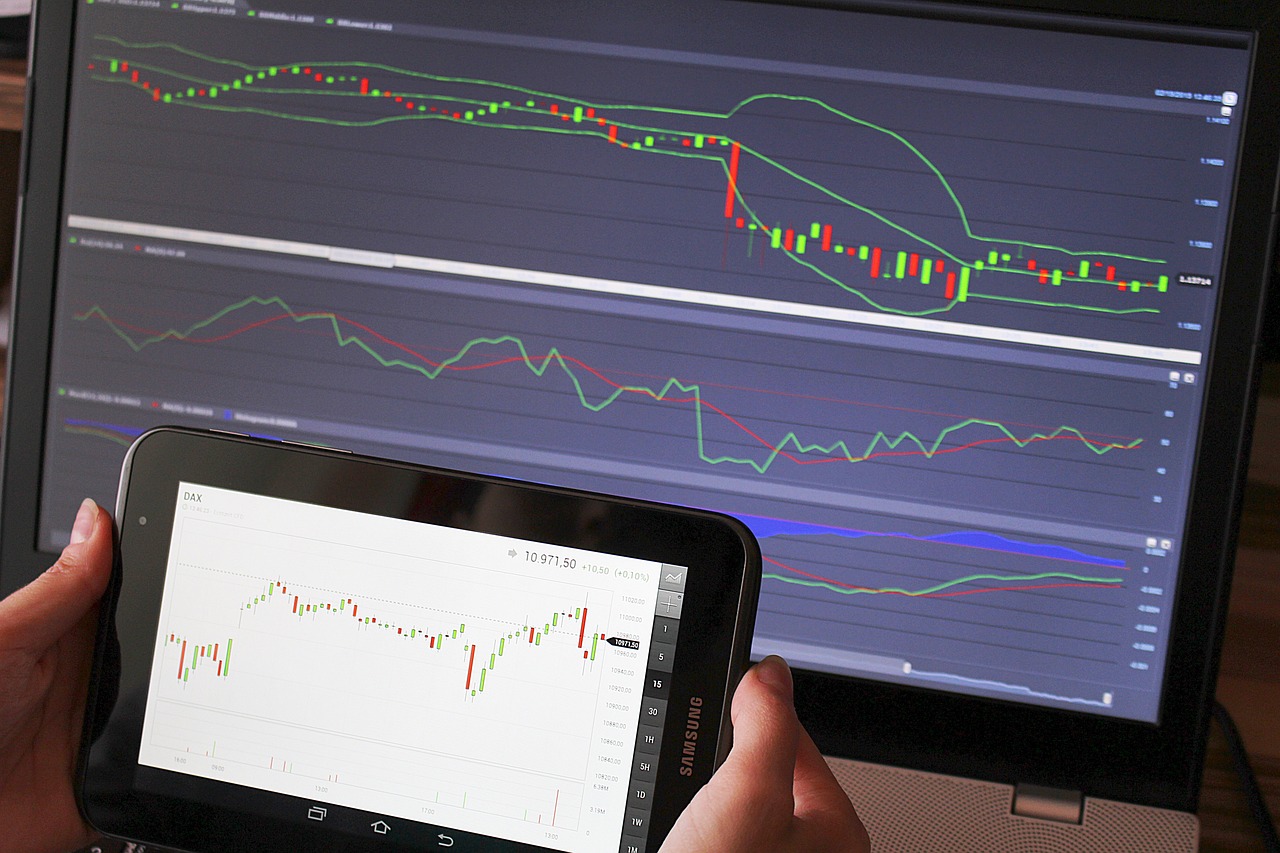
Long-Term vs. Short-Term Trading
When it comes to trading cryptocurrency, one of the most significant decisions you’ll face is whether to adopt a long-term or short-term trading strategy. Each approach has its own unique set of advantages and disadvantages, and understanding these can help you tailor your trading style to match your financial goals and risk tolerance. Think of it like choosing between a marathon and a sprint; both require different training, mindset, and strategies.
Long-term trading, often referred to as HODLing in the crypto community, involves buying assets and holding onto them for an extended period, typically months or even years. This strategy is based on the belief that the value of the cryptocurrency will increase significantly over time. One of the key benefits of long-term trading is the reduced stress of constantly monitoring the market. You can set your investment and forget it, allowing you to avoid the emotional rollercoaster that comes with daily price fluctuations. However, it’s essential to conduct thorough research and choose coins that have strong fundamentals, as not every cryptocurrency will survive the test of time.
On the flip side, short-term trading, or day trading, is akin to a high-speed chase. It involves making quick trades to capitalize on small price movements within a single day. Traders who adopt this strategy often use technical analysis and market indicators to make informed decisions. The allure of short-term trading is the potential for quick profits, which can be incredibly enticing, especially in the highly volatile cryptocurrency market. However, it comes with its own set of challenges, including the need for constant market monitoring and the risk of emotional decision-making. The fast-paced nature of this strategy can lead to significant losses if you’re not careful.
To help you understand the differences between these two approaches, here’s a quick comparison:
| Aspect | Long-Term Trading | Short-Term Trading |
|---|---|---|
| Investment Horizon | Months to years | Minutes to days |
| Stress Level | Lower | Higher |
| Market Monitoring | Minimal | Constant |
| Research Focus | Fundamentals | Technical Analysis |
| Profit Potential | Gradual growth | Quick gains |
Ultimately, the choice between long-term and short-term trading should align with your personal financial goals and risk appetite. If you’re someone who prefers a more hands-off approach and believes in the long-term potential of cryptocurrencies, then long-term trading might be your best bet. Conversely, if you thrive in fast-paced environments and can handle the stress of rapid decision-making, short-term trading could be more suitable.
Regardless of the path you choose, remember that the cryptocurrency market is ever-evolving, and staying informed is crucial. Adaptability is key, and being open to adjusting your strategy based on market conditions can make all the difference in your trading success.
- What is the best strategy for beginners? Beginners often find long-term trading less stressful and more manageable as they learn the ropes of the market.
- Can I combine both strategies? Yes, many traders use a mix of both long-term and short-term strategies to diversify their portfolios.
- How do I choose between long-term and short-term trading? Consider your financial goals, risk tolerance, and how much time you can dedicate to trading.

Leveraging Trading Tools
In the fast-paced world of cryptocurrency trading, having the right tools at your disposal can make a significant difference in your trading experience. Think of trading tools as your trusty toolbox; just as a carpenter wouldn’t build a house without the right instruments, you shouldn’t dive into trading without the proper resources. These tools can help you track performance, manage trades, and analyze market data effectively. So, what are some of the essential tools you should consider?
First and foremost, trading platforms are your gateway to the cryptocurrency market. They allow you to buy, sell, and exchange cryptocurrencies with ease. When selecting a platform, consider factors like user interface, accessibility, and the range of cryptocurrencies available. Some popular platforms include Binance, Coinbase, and Kraken. Each offers unique features, so take the time to explore them and find one that suits your trading style.
Another crucial tool in your arsenal is a cryptocurrency wallet. While exchanges often provide wallets, having your own secure wallet ensures that your assets are safe from hacks and other vulnerabilities. You can choose between hot wallets (which are connected to the internet) or cold wallets (offline storage). Cold wallets, such as hardware wallets, offer enhanced security for long-term storage of your digital assets.
Moreover, charting software is invaluable for visualizing market trends. Tools like TradingView or Coinigy provide advanced charting capabilities, allowing you to analyze price movements and identify potential trading opportunities. With features like candlestick charts, volume indicators, and trend lines, you can gain insights that might not be immediately obvious through basic price tracking.
Additionally, consider utilizing trading bots. These automated systems can execute trades on your behalf based on pre-set strategies. While they can be incredibly helpful in managing trades and executing orders quickly, it’s essential to understand how they work. You wouldn’t want to leave your hard-earned money in the hands of a bot without understanding its algorithms!
Finally, keep an eye on news aggregators and social media platforms. Staying updated with the latest news in the cryptocurrency space can give you an edge. Platforms like CoinDesk and CoinTelegraph provide timely information that can influence market movements. Similarly, following influencers and analysts on Twitter or Reddit can offer insights that traditional news sources might miss.
In summary, leveraging the right trading tools can significantly enhance your trading strategy and overall experience. By investing time in understanding and utilizing these resources, you can optimize your trading decisions and potentially increase your returns. Remember, the world of cryptocurrency is ever-evolving, and staying equipped with the right tools is essential for success.
- What are the best trading platforms for beginners? Some popular platforms for beginners include Coinbase, Binance, and Kraken due to their user-friendly interfaces and robust security features.
- What is the difference between a hot wallet and a cold wallet? A hot wallet is connected to the internet and is more convenient for frequent transactions, while a cold wallet is offline and provides enhanced security for long-term storage.
- Can trading bots really help me make money? Yes, trading bots can automate trades based on specific strategies, but it’s crucial to understand their algorithms and set them up correctly to avoid losses.
- How often should I check the market? It depends on your trading strategy. Day traders may check the market multiple times a day, while long-term investors may only check weekly or monthly.

Continuous Learning and Adaptation
In the fast-paced world of cryptocurrency, continuous learning and adaptation are not just beneficial; they are essential for survival. The market is in a constant state of flux, with new technologies, regulations, and trends emerging almost daily. Think of it like surfing: if you want to ride the wave, you have to keep your balance while adjusting to the ever-changing tides. So, how do you stay ahead in this thrilling yet unpredictable environment?
First and foremost, it's crucial to stay updated on the latest news and developments. This means following reputable news outlets, subscribing to cryptocurrency newsletters, and engaging with online communities. Platforms like Twitter, Reddit, and specialized forums can serve as invaluable resources for real-time information and insights. By immersing yourself in these discussions, you not only learn from others' experiences but also gain a broader perspective on market sentiment.
Moreover, consider joining online courses or webinars that focus on cryptocurrency trading. These educational resources can help you grasp advanced concepts, such as decentralized finance (DeFi), non-fungible tokens (NFTs), and the implications of blockchain technology. With the right knowledge, you can make informed decisions that align with your trading strategy.
Another key aspect of adaptation is analyzing your trading performance. Keeping a trading journal can be incredibly helpful. Document your trades, including the reasons behind each decision, the outcomes, and what you learned from them. This practice not only helps you identify patterns in your trading behavior but also encourages a mindset of growth and improvement.
Here's a simple table to illustrate the benefits of maintaining a trading journal:
| Benefits | Description |
|---|---|
| Self-Reflection | Helps you understand your trading psychology and emotional triggers. |
| Performance Tracking | Allows you to see which strategies work and which don't. |
| Continuous Improvement | Encourages you to learn from both successes and failures. |
Lastly, don't forget to adapt your strategies based on market conditions. For example, during a bullish market, you might want to focus on short-term gains, while in a bearish market, a more defensive, long-term approach could be advantageous. Being flexible in your trading strategy is like being a chameleon; it allows you to blend in with your surroundings and thrive in any situation.
In conclusion, the cryptocurrency market is a dynamic landscape that demands your attention and adaptability. By committing to continuous learning, actively engaging with the community, and analyzing your performance, you can navigate this thrilling world more effectively and increase your chances of success.
- How often should I update my knowledge about cryptocurrency? Aim to stay updated at least weekly, but daily engagement is even better.
- What are the best resources for learning about cryptocurrency? Look for reputable news sites, online courses, and active community forums.
- Should I keep a trading journal? Absolutely! It’s a powerful tool for self-reflection and improving your trading strategies.
Frequently Asked Questions
- What is the best way to start trading cryptocurrency with limited capital?
Starting with limited capital means you should focus on education first. Understanding the basics of cryptocurrency, blockchain technology, and market dynamics is crucial. Choose a small amount to invest initially, and consider using demo accounts on trading platforms to practice without financial risk.
- How do I choose the right cryptocurrency exchange?
When selecting an exchange, look for security features, transaction fees, and the overall user experience. Check if the exchange supports the cryptocurrencies you want to trade and if it complies with regulations in your country. Reading user reviews can also provide insights into the platform's reliability.
- What should I consider when setting a trading budget?
Your trading budget should be based on your financial situation and risk tolerance. It's wise to allocate only a small percentage of your total savings to trading. This way, you can manage your risk effectively and avoid emotional decision-making when the market fluctuates.
- What are some effective risk management strategies?
Implementing strategies like stop-loss orders and diversification can significantly reduce potential losses. By setting a stop-loss order, you can limit your losses on a trade automatically. Diversifying your portfolio across different cryptocurrencies can also help spread risk.
- How can I learn technical analysis as a beginner?
Start by familiarizing yourself with basic concepts such as charts, trends, and indicators. There are many online resources, including tutorials and courses, that can help you understand how to read charts and analyze market movements. Practice makes perfect, so try applying what you learn in real-time trading scenarios.
- Should I focus on long-term or short-term trading?
It depends on your goals and risk tolerance. Long-term trading can be less stressful and allows you to ride out market volatility, while short-term trading can yield quick profits but requires constant monitoring. Consider your lifestyle and how much time you can dedicate to trading when making this decision.
- What trading tools should I use?
Utilize platforms and applications that help you track performance, manage trades, and analyze market data. Tools like trading bots, portfolio trackers, and charting software can enhance your trading experience and help you make informed decisions.
- How can I stay updated on cryptocurrency trends?
Follow reputable news sources, join online forums, and participate in social media groups focused on cryptocurrency. Continuous learning is key in this rapidly evolving market, so make it a habit to stay informed about new developments and trends.



